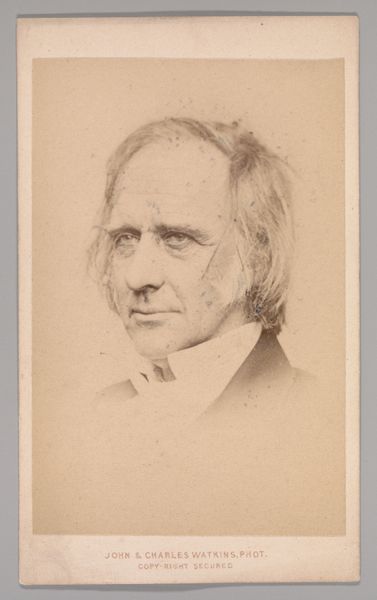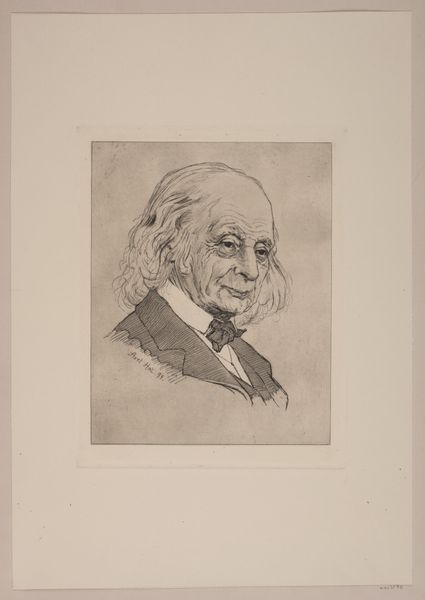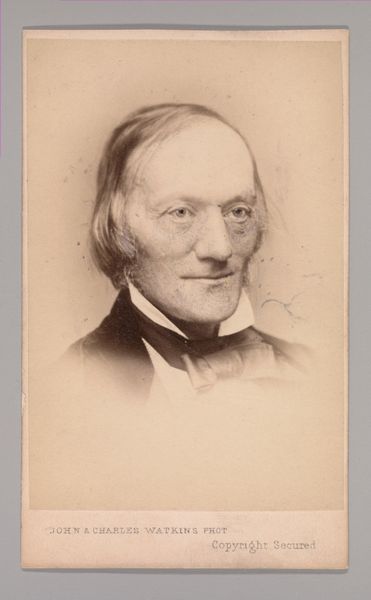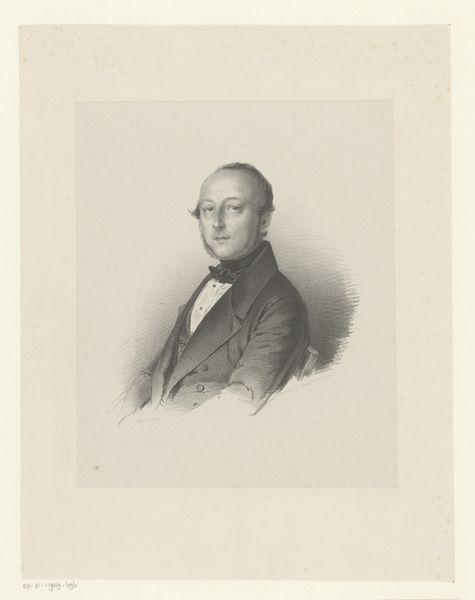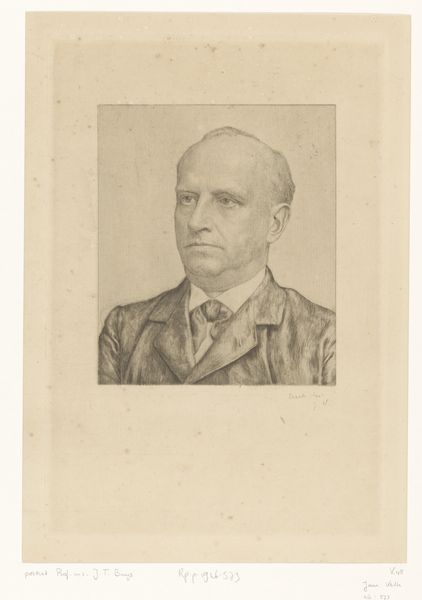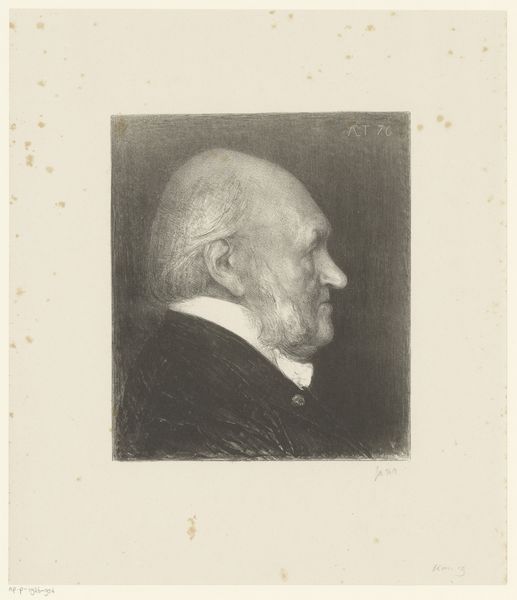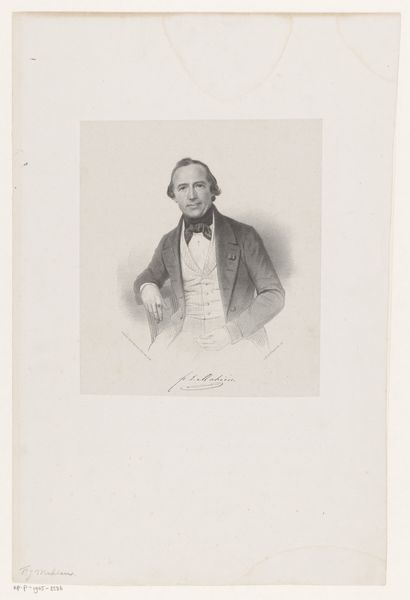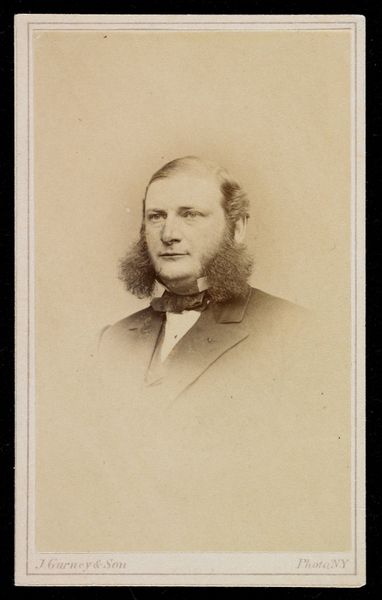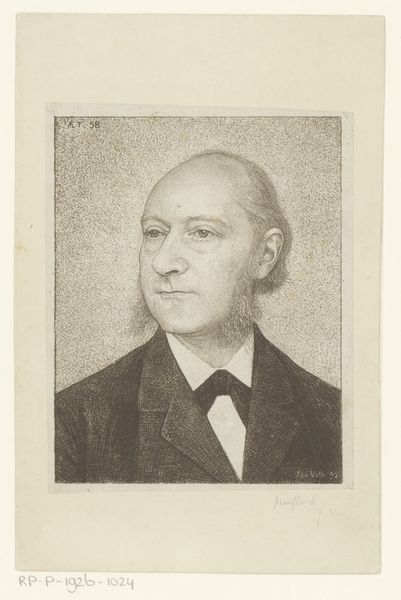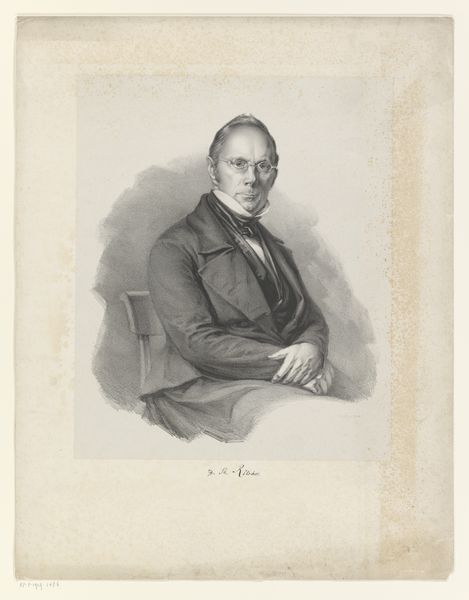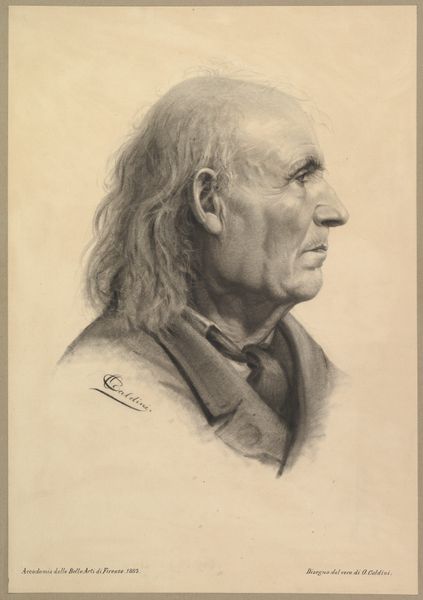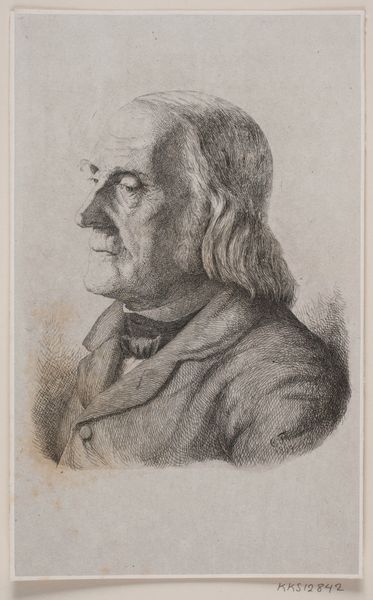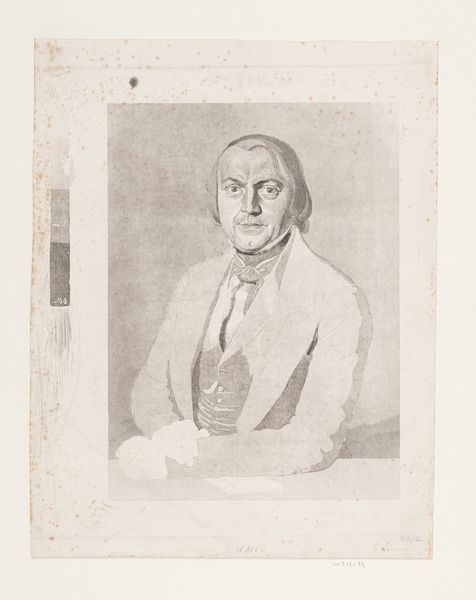
Dimensions: height 392 mm, width 298 mm
Copyright: Rijks Museum: Open Domain
Curator: It's intriguing, isn’t it? This pencil drawing, simply entitled "Portret van Antonie Hendrik Gerrit Paul van den Es," was crafted in 1896 by Jan Veth. It's part of the Rijksmuseum's collection, and a fascinating example of late 19th-century portraiture. Editor: He has such kind eyes, don’t you think? It’s also somewhat severe. The meticulously detailed face emerging from the darkness gives a pensive, contemplative, even a little…stern vibe? It's beautiful, but not in an obvious way. Curator: Right, and what resonates deeply here is how Veth uses the portrait to underscore van den Es’s societal standing. His tailored suit, his neatly groomed whiskers – it all speaks volumes about bourgeois respectability. It mirrors the conservative values and structures prevalent during that era. It's about more than likeness; it's about reinforcing social order through visual representation. Editor: It's interesting that you say that, I wonder though...do you think there’s something subtly subversive happening here? Veth's capturing his serious look and yet, he feels oddly vulnerable. The soft pencil work gives the drawing this dreamlike fragility and almost hints at his own personal stories… a glimpse behind the curtain. Curator: That vulnerability is perhaps precisely the tension that gives the work its power! In looking closely at van den Es’ attire, he still adheres to those established codes of masculine identity, it shows how societal constraints shaped identity representation for men during this era, which limited ways they could express their individual experience and interiority. Editor: Yes! There's the societal expectations, right? and his reality, his actual, maybe melancholic and complicated self. He reminds me of so many men I've known: playing the role expected of them but subtly, desperately wanting to break free, maybe even hoping someone will notice. I think the sensitivity here shows that maybe the artist noticed that, which is touching to see. Curator: Ultimately, in this seemingly straightforward portrait lies an interplay between conformity and individuality. Veth captures the sitter but offers us a broader critique about the era in which it was created. Editor: Absolutely. Looking at it now, I feel like the drawing tells a secret that only paper and graphite can keep. I am strangely moved.
Comments
No comments
Be the first to comment and join the conversation on the ultimate creative platform.
